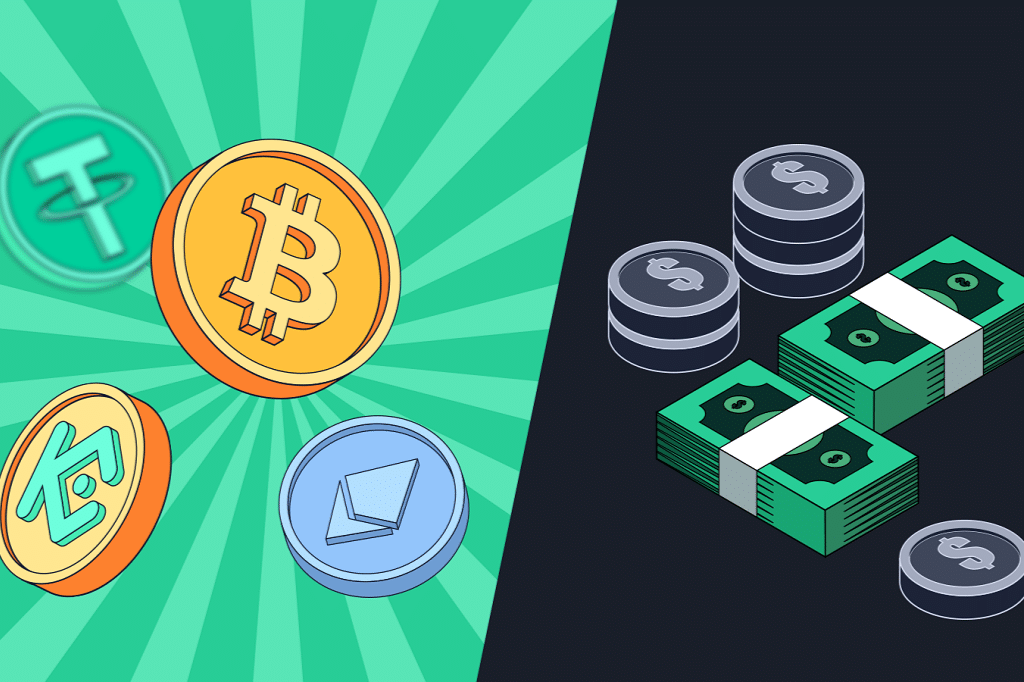Key Differences Between Cryptocurrency and Traditional Money
-
 Bookmakers Review
Bookmakers Review
- November 28, 2024

Money comes in all shapes and sizes. It can be one of those giant stones from the Yap Islands, or a tiny metal coin; you could even take a piece of paper and write MONEY on it. As long as someone accepts your currency, you can do business together.
So it is with cryptocurrency. However, there are specific things about crypto that make it attractive compared to traditional money, aka “fiat” currency. The more you understand these differences, the more money you can make betting on crypto – or with a well-timed purchase.
Here are the three biggest things that make cryptocurrency different from all the rest, and why it matters to you as a bettor/investor.
1. It’s Digital
Please forgive us for stating the obvious, but this is easily the most important difference between crypto and fiat currency. Bitcoin and other digital coins do not exist in the physical sense – although your cryptocurrency wallet can be a physical device, or a piece of paper for that matter.
Your digital currency “lives” not in your crypto wallet, but on the internet, specifically on the digital ledger known as the blockchain that’s used to record the transactions, verify ownership, and control the output of the digital coin in question.
The trick is to think of crypto as an entire system rather than just a digital coin. When we think of traditional money, we tend to think of the cold, hard cash itself, and not the larger monetary system. In reality, money is more than just something you hide under your mattress. William Stanley Jevons identified four functions in his 1875 work Money and the Mechanism of Exchange:
- A medium of exchange
- A store of value
- A unit of account
- A standard of deferred payment
Economists have since given that fourth function the Pluto treatment, focussing instead on the other three. The point is that money “is” all these things, and when that money is digital, it has superpowers compared to a paper banknote. For example, Bitcoin solves the “double spending” problem by being virtually impossible to counterfeit, and by putting a verifiable cap on the amount of Bitcoin that can be produced. Meanwhile, who knows how many dollars/euros/rubles might get printed and circulated this year – real or otherwise.
2. It’s Decentralized
Blockchains like the one supporting Bitcoin are not owned by any government bank or other central authority; they are open-source database programs, decentralized, and therefore largely free from political interference. Nobody’s going to order Satoshi Nakamoto to print more Bitcoin – or shrink the supply.
Of course, this also means that crypto isn’t protected in the same way that fiat currencies are. The U.S. dollar has value in part because the U.S. government can back that currency, using its economic and military might. If you purchase crypto, you’re in danger of getting the rug pulled out from under you by bad actors, and the government can only do so much to help you.
3. It’s Transparent
Every monetary system has its own level of inscrutability. Some currencies are easier to track than others; Bitcoin and similar cryptocurrencies operate on their open-source blockchains, where transactions are recorded and verifiable. We know, for example, that Donald Trump transferred 1,075 ETH (that’s Ethereum) to the Coinbase crypto exchange in December 2023.
Again, by making all these transactions open and public, crypto simply works better than traditional currencies. There are still challenges to face; the leading blockchains themselves might be strong, but some crypto exchanges are more reliable than others, and scam artists are lurking around every corner. Then again, it’s the same with banks and fiat currency.
Whichever coins you’ve got, digital or otherwise, be smart with your money – and stay tuned to Bookmakers Review for more crypto tips and analysis.











